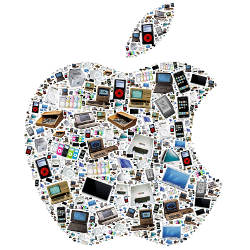
Apple’s iconic product boxes boast of their contents’ U.S. pedigree with a “Designed in Cupertino” tagline. While most buyers probably suspect the products are made outside the U.S., almost no one outside the famously tight-lipped company fully understands the economics of Apple’s manufacturing supply chain.
Enter University of California, Irvine business professor Ken Kraemer who has led a series of far-reaching investigations into how Apple’s products are made. The team’s findings, as detailed in “Capturing Value in Global Networks: Apple’s iPad and iPhone,” not only shed light on the intricacies of the modern high-tech value chain, but they may also hold important lessons for managers and policymakers trying to chart the future course of U.S. industry.
The team’s analysis reveals that while most Apple components are indeed manufactured abroad—pre-dominantly in Korea, Japan, and Taiwan—the economic benefit accrues overwhelmingly to Apple. So, while each iPad tablet computer sold contributes a theoretical $275 to the U.S. trade deficit, that transaction comes with enormous benefits to Apple’s employees, share-holders, distribution partners, and, by extension, the rest of the U.S. economy.
While the devices may be assembled in China, that country accrues surprisingly little economic benefit. No iPad or iPhone components are actually manufactured in China, and as little as $10 from each sale goes to Chinese firms, primarily by way of wages paid to workers on the assembly line.
The team’s analysis revealed that, accounting for both consumers’ and phone carriers’ share of the cost, Apple probably retains about 58% of the sales price of a typical iPhone 4 smartphone. That margin drops considerably for the lowest-end iPad, where Apple holds on to roughly 30% of the $499 sales price. Those margins increase, of course, when Apple sells the products via its Web site or stores.
How did the team unearth so much detail about the inner workings of such a notoriously secretive organization?
“We just dug,” says Kraemer. The team, which also included Greg Linden of University of California, Berkeley and Jason Dedrick of Syracuse University, relied heavily on tear-down reports from iSuppli, in which engineers disassemble products and perform painstaking analysis of each component. (The iPad, for instance, contains more than 400 individual parts.) The team then worked with industry analysts, former Apple employees, and various experts to unravel the entire supply chain surrounding the Apple products, making informed estimates about the involved financial transactions. The team is now applying its methodology to other industries, such as analyzing, for example, the U.S. wind power industry.
What lessons can managers derive from this analysis? First and foremost, the study calls into question the received political wisdom that reviving manufacturing will pave the way back to economic prosperity. For all the Sturm und Drang around the U.S.’s eroding manufacturing base, the real economic value of high-tech manufacturing and assembly jobs may be quite limited.
Kraemer believes the lesson here is that U.S. companies can learn a lot from the Apple model by focusing their efforts further up the value chain. “We need to think more about the kind of jobs that it makes sense to keep here,” he says. In his view, that means creating high-value, high-margin jobs—like design, marketing, and product management—and keeping them close to home.
If other companies can embrace the Apple model, taking advantage of worldwide manufacturing resources while creating well-paying jobs at home, there may be hope for the currently beleaguered U.S. economy.
“Those who decry the decline of U.S. manufacturing too often point at the offshoring of assembly for electronics goods like the iPhone,” the authors conclude. “There is simply little value in electronics assembly.”




Join the Discussion (0)
Become a Member or Sign In to Post a Comment